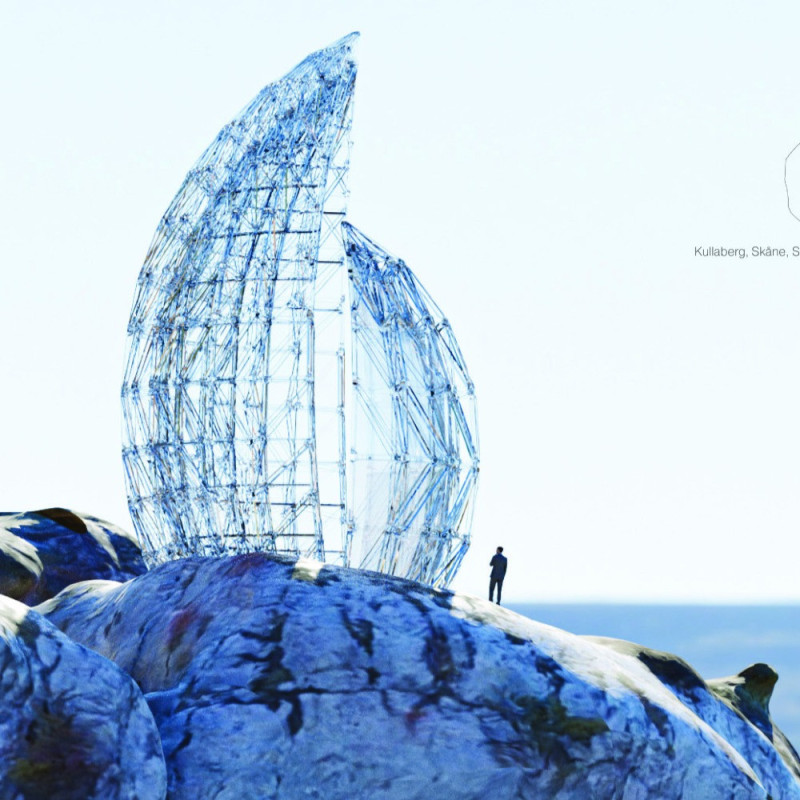5 key facts about this project
The Wooden View pavilion is a structure on the cliffs of Mölle in southern Sweden. It functions as a space for observation and shelter, designed to connect visitors with the surrounding landscape. The overall design concept centers around the use of transparent wood technology, engaging with environmental elements and modern architectural practices.
Form and Inspiration
The form of the pavilion is inspired by maritime themes, resembling shapes such as wooden boats and sails. This design reflects the coastal context and the area's long-standing relationship with the sea. The structure consists of two asymmetrical framework shells that face each other, creating a unique dialogue with the landscape and enhancing the experience of the views outside.
Materiality and Structure
The pavilion is built using a new type of wood that replaces lignin with a transparent polymer. This innovation results in a material that is both see-through and stronger than conventional wood. Consequently, large openings allow for clear views of the cliffs and sea while ensuring the building remains sturdy. The design enables natural light to fill the space, connecting the interior and exterior environments.
Environmental Integration
The height of the pavilion has been carefully considered to align with the nearby lighthouse, creating a cohesive visual relationship in the area. Transparent walls offer continuous views while allowing wind to flow through small gaps for natural ventilation. This design choice enhances comfort for visitors while maintaining a balance between aesthetics and environmental responsiveness.
Inside the pavilion, variations in the thickness of the framework and wall panels create interesting effects of light and shadow. These effects change throughout the day, influenced by sunlight and weather, making each visit a distinct experience.



















































